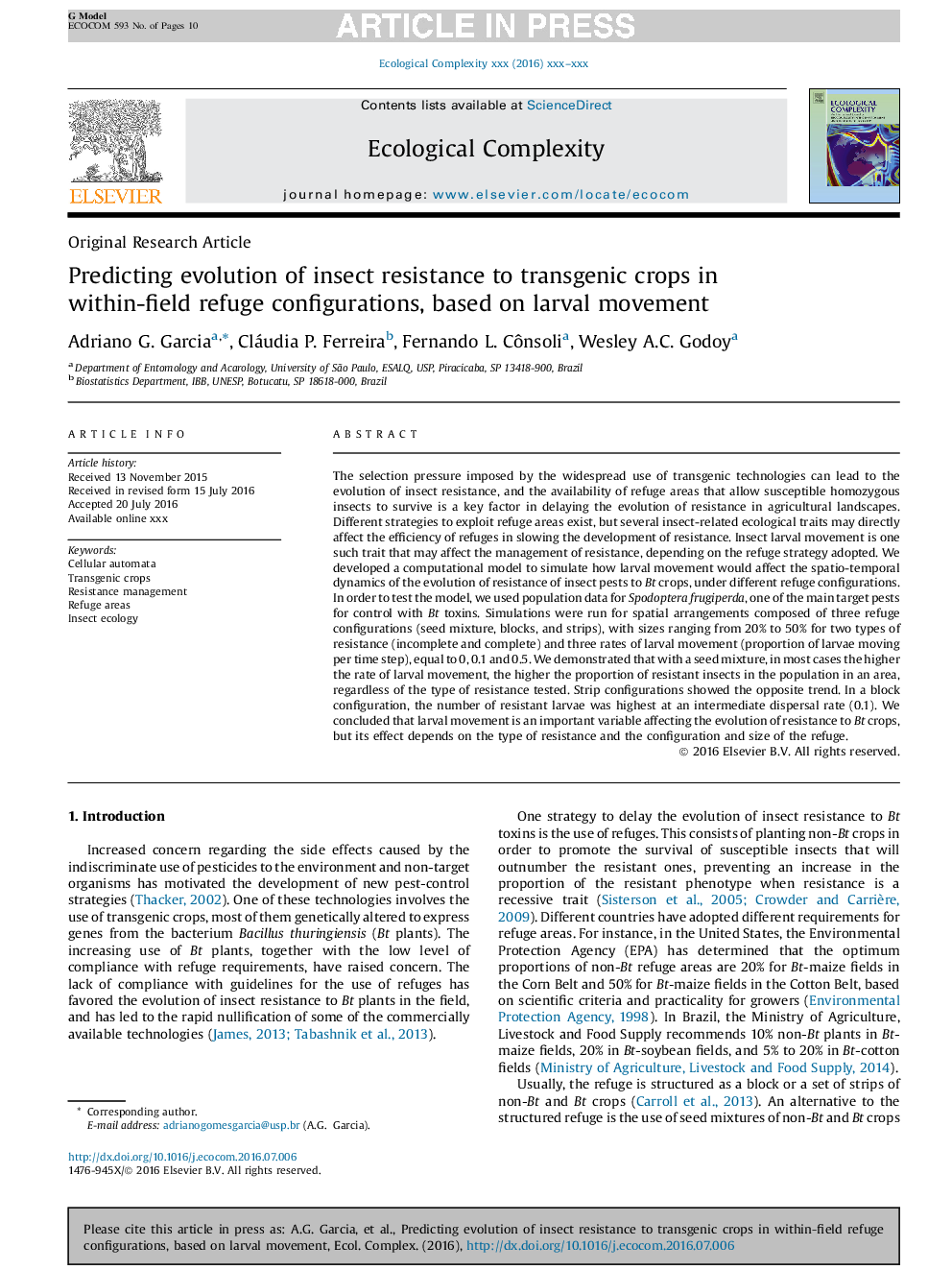| کد مقاله | کد نشریه | سال انتشار | مقاله انگلیسی | نسخه تمام متن |
|---|---|---|---|---|
| 8844881 | 1617086 | 2016 | 10 صفحه PDF | دانلود رایگان |
عنوان انگلیسی مقاله ISI
Predicting evolution of insect resistance to transgenic crops in within-field refuge configurations, based on larval movement
ترجمه فارسی عنوان
پیش بینی تکامل مقاومت حشرات به محصولات تراریخته در پهنه بندی پناهگاه های درونزا براساس حرکت لارو
دانلود مقاله + سفارش ترجمه
دانلود مقاله ISI انگلیسی
رایگان برای ایرانیان
کلمات کلیدی
اتوماتای سلولی، محصولات ترانس ژنیک، مدیریت مقاومت، مناطق پناهندگی زیست شناسی حشرات،
موضوعات مرتبط
علوم زیستی و بیوفناوری
علوم کشاورزی و بیولوژیک
بوم شناسی، تکامل، رفتار و سامانه شناسی
چکیده انگلیسی
The selection pressure imposed by the widespread use of transgenic technologies can lead to the evolution of insect resistance, and the availability of refuge areas that allow susceptible homozygous insects to survive is a key factor in delaying the evolution of resistance in agricultural landscapes. Different strategies to exploit refuge areas exist, but several insect-related ecological traits may directly affect the efficiency of refuges in slowing the development of resistance. Insect larval movement is one such trait that may affect the management of resistance, depending on the refuge strategy adopted. We developed a computational model to simulate how larval movement would affect the spatio-temporal dynamics of the evolution of resistance of insect pests to Bt crops, under different refuge configurations. In order to test the model, we used population data for Spodoptera frugiperda, one of the main target pests for control with Bt toxins. Simulations were run for spatial arrangements composed of three refuge configurations (seed mixture, blocks, and strips), with sizes ranging from 20% to 50% for two types of resistance (incomplete and complete) and three rates of larval movement (proportion of larvae moving per time step), equal to 0, 0.1 and 0.5. We demonstrated that with a seed mixture, in most cases the higher the rate of larval movement, the higher the proportion of resistant insects in the population in an area, regardless of the type of resistance tested. Strip configurations showed the opposite trend. In a block configuration, the number of resistant larvae was highest at an intermediate dispersal rate (0.1). We concluded that larval movement is an important variable affecting the evolution of resistance to Bt crops, but its effect depends on the type of resistance and the configuration and size of the refuge.
ناشر
Database: Elsevier - ScienceDirect (ساینس دایرکت)
Journal: Ecological Complexity - Volume 28, December 2016, Pages 94-103
Journal: Ecological Complexity - Volume 28, December 2016, Pages 94-103
نویسندگان
Adriano G. Garcia, Cláudia P. Ferreira, Fernando L. Cônsoli, Wesley A.C. Godoy,
